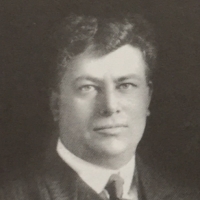 Walter Flanders was a colorful figure in the emerging automobile industry and survived in positions of authority long after many of the others, like Ransom Olds, found themselves on the sidelines (voluntarily or otherwise).
Walter Flanders was a colorful figure in the emerging automobile industry and survived in positions of authority long after many of the others, like Ransom Olds, found themselves on the sidelines (voluntarily or otherwise).
Unlike the pioneers of the day, such as Ford, Olds and of course Billy, Flanders was not a founder but a hired hand. He flitted from company to company like a butterfly, ending up picking up the pieces of Ben Briscoe’s U.S. Motors and turning it into the company which became the Chrysler we knew in our lifetimes.
He was ten years younger than Billy Durant and entered the horseless carriage business the same way as Henry Leland: as a machine tool salesman. He sold some machines to Henry Ford in 1905, just as Ford was just getting his fourth company off the ground. After a while, Ford complained the machines were not turning out crankshafts at the rate Flanders quoted. The big man simply took off his coat, went into the shop, and by operating the machines properly showed they could do even better than he quoted.
That impressed the young Ford, who wanted to hire him.
Ford
He didn’t at first, because he suspected Flanders would throw his weight around, not always in a way the somewhat insecure Ford would have liked. Ford bit the bullet in 1906 and brought the energetic Flanders on board as works manager. The new addition didn’t pay too much attention to job titles or descriptions, and helped out in many areas. At least that was his version. As some spouses can attest “wanting to help” can be code for interference or downright domination.
In 1906 Ford broke from the shackles imposed by his founding stockholders (full story in Comeback!) and introduced the Model N, revolutionary at the time because of its low price of $500. Initial sales of the N were disappointing, however. Flanders figured it was because it looked like a glorified buggy. So he contracted with Barney Everitt, a body builder and the future E in EMF, to make decent bodies for the N. He paid $25 per body and sold it as an upgrade option for $100.
Model N sales more than doubled and finally exceeded capacity.
That prompted Flanders to introduce something Ford lacked: a formal production schedule. Previously, everything was haphazard. Cars were simply built as orders came in. In a harbinger of the ‘just-in-time’ philosophy made famous by the Japanese decades later, Flanders imposed his schedule on Ford’s suppliers, and demanded they keep inventory on hand for whenever Ford needed it.
His skill at organizing production soon caught the eye of a company only a block away from Ford’s plant.
Wayne/EMF
Barney Everitt, the body builder buddy of Flanders, moved on to become president of the Wayne Automobile Company, one of the many car companies mushrooming up all over Detroit. They were losing money on every car they sold and Everitt persuaded the board of directors they needed a production guru to fix their problems. He knew just the man, and in early 1908 Flanders walked the block to become production manager of Wayne.
It took him no more than a few months to recognize they were doing it all wrong. The board agreed, so much so they dissolved their company and formed EMF to take over Wayne’s assets and give the “new blood” a stake in the enterprise.
In this post you can read what happened to EMF. Bottom line, J. P. Morgan bought it. Initially, they kept Flanders on, but when he formed a new company while on their payroll they pulled the plug and set him free.
Maxwell
Ben Briscoe entered the auto industry by starting Maxwell-Briscoe with Jonathan Maxwell, one of the experts who helped Ransom Olds design the Curved Dash Oldsmobile, the first mass-produced car in the world. Briscoe initiated the first attempted consolidation of the auto industry, International Motors, with Billy Durant and J. P. Morgan. When that fell apart, and Billy formed General Motors, Briscoe set out to compete, and he started U. S. Motors.
Briscoe tried to buy Cadillac with the help of Morgan, but Morgan let him down and he had to endure Cadillac slipping out of his hands into Billy’s firm grasp. When Billy failed to buy Ford, Briscoe tried to, but Morgan let him down again. So he soldiered on and bought a few struggling car makers, notably Stoddard-Dayton and the Brush, started by his brother Frank.
None of the acquisitions were profitable and the 1910 recession which brought GM to the brink of disaster hurt U. S. Motors, too. In 1912 it finally went bankrupt and essentially was handed to Walter Flanders.
Flanders promptly did the common sense thing and shut everything down except Maxwell-Briscoe, the core company which had always done well.
He renamed the remaining company Maxwell. The company prospered, but Flanders began losing interest. In 1919 he retired to spend more time on his various properties. The company was suffering from the dislocation following the end of the First World War and the bankers approached Walter Chrysler, who had just completed his promise of staying with Billy for three years after the latter completed his comeback.
Chrysler succeeded and eventually turned Maxwell into the Chrysler we know today.